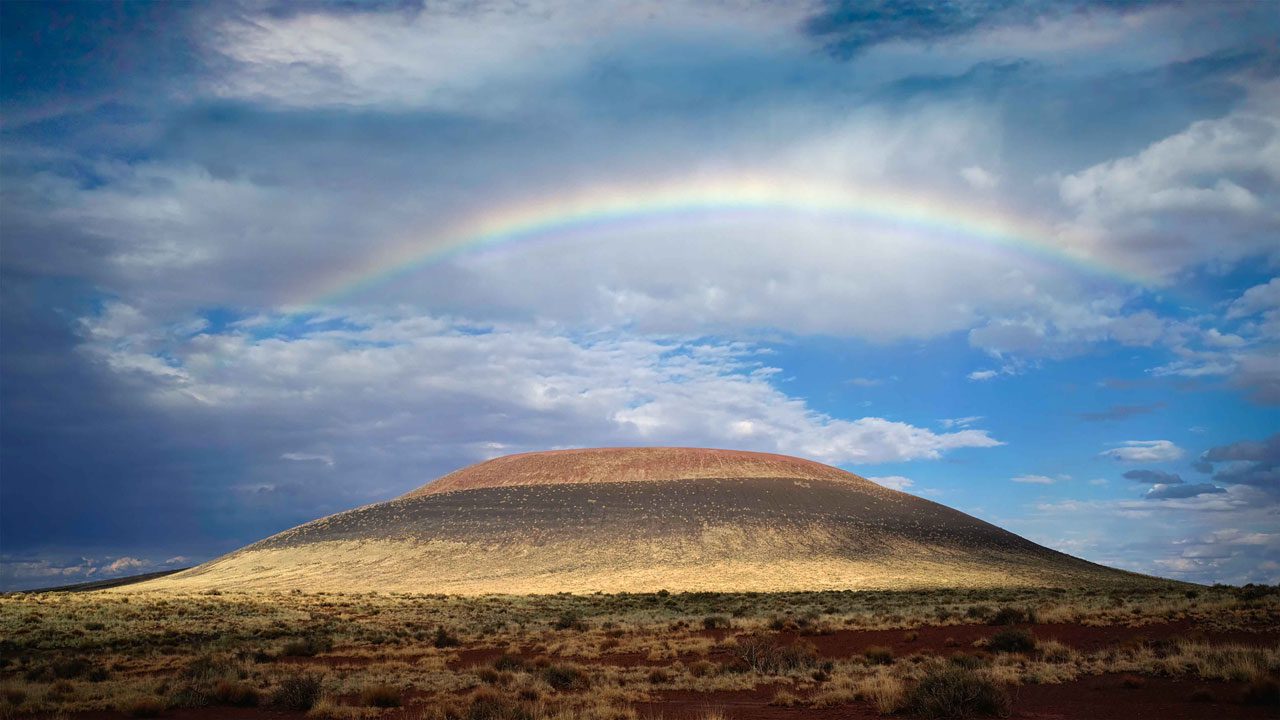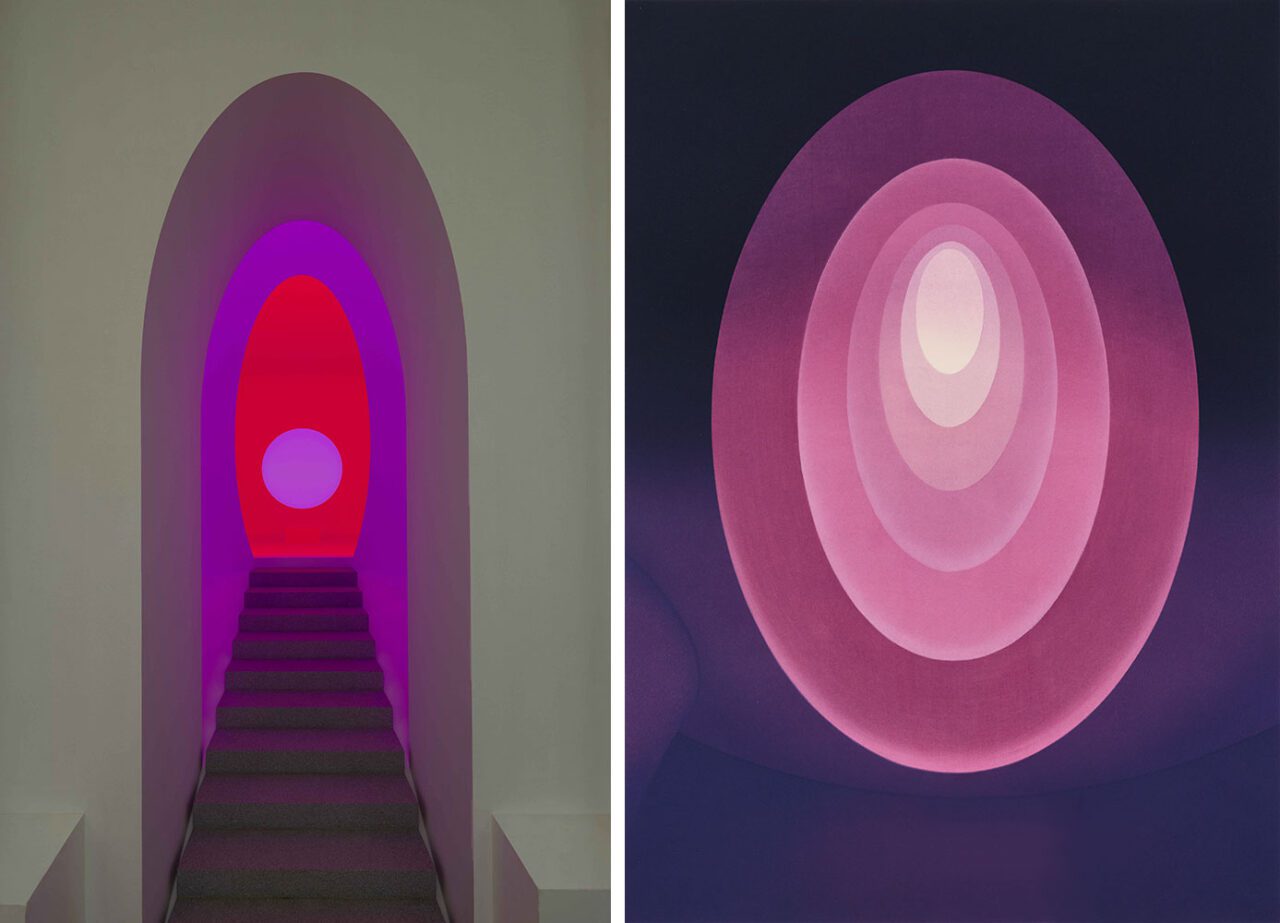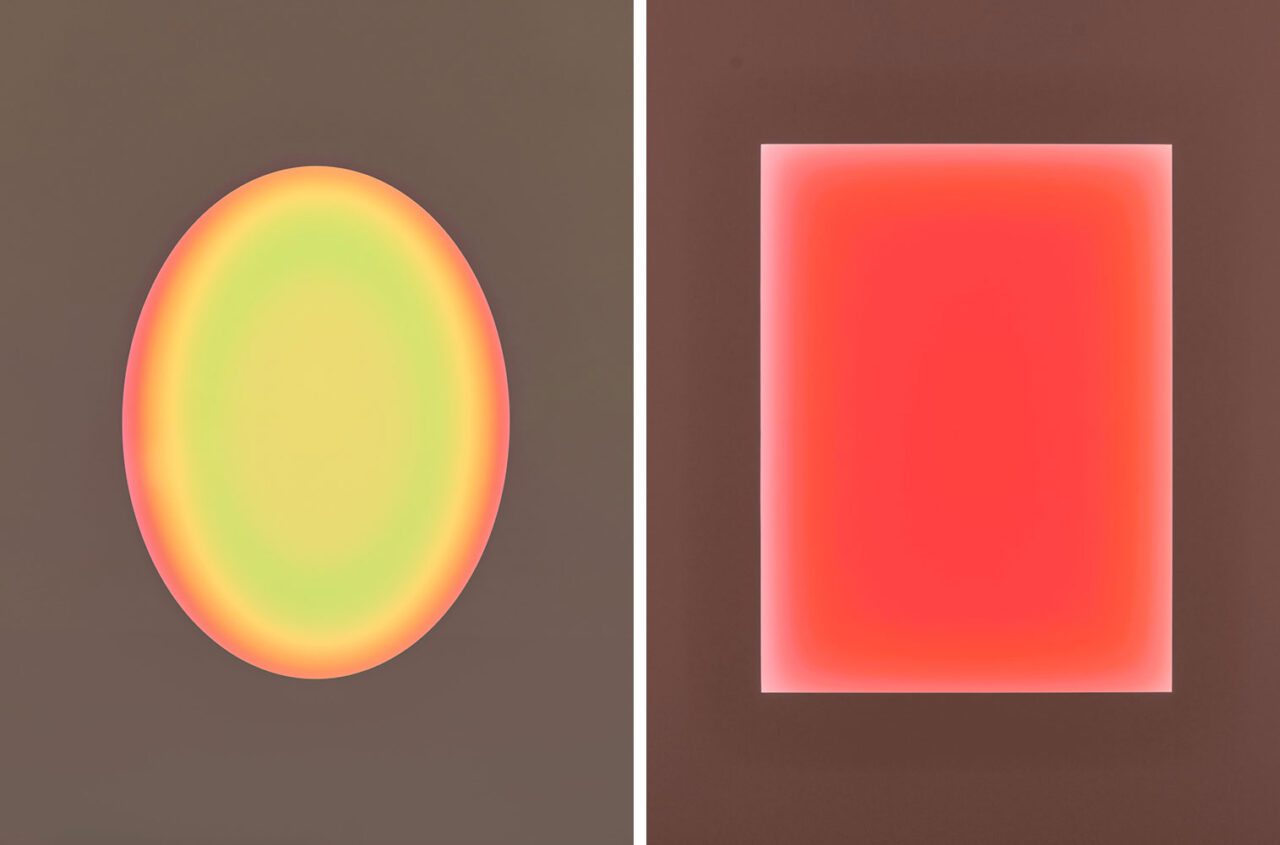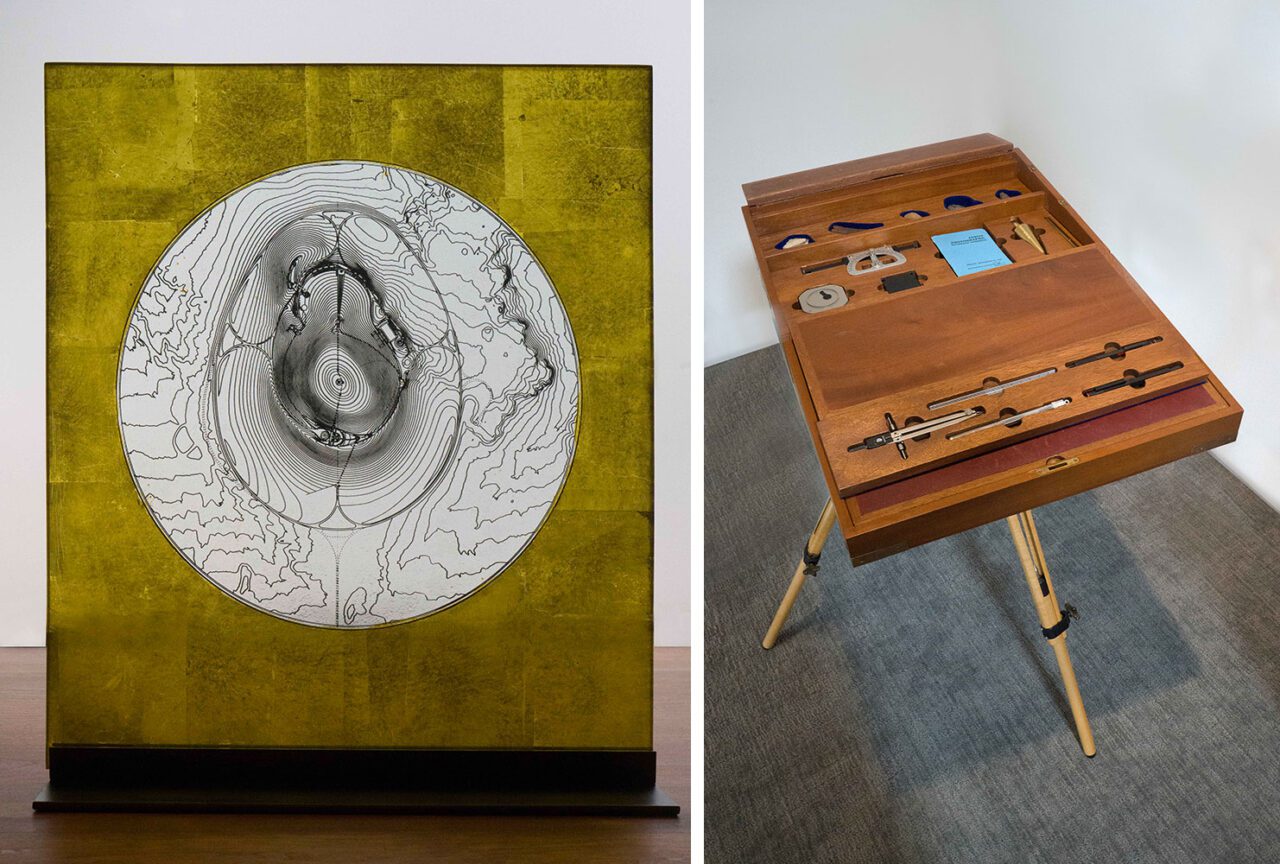PRESENTATION: James Turrell
 James Turrell explores the myriad possibilities of light as subject, material, and medium of perception, as well as its inherent connections to painting and sculpture. In formally simple works, he assigns light its own structure, drawing attention to the limits of seeing while conveying a sense of transcendence and revelation. Ultimately, this fascination is connected to Turrell’s search for humanity’s place in the universe, a spiritual quest that he attributes to his Quaker faith.
James Turrell explores the myriad possibilities of light as subject, material, and medium of perception, as well as its inherent connections to painting and sculpture. In formally simple works, he assigns light its own structure, drawing attention to the limits of seeing while conveying a sense of transcendence and revelation. Ultimately, this fascination is connected to Turrell’s search for humanity’s place in the universe, a spiritual quest that he attributes to his Quaker faith.
By Dimitris Lempesis
Photo: Gagosian Archive
James Turrell’s solo exhibition in Paris features two new large installations: a “Ganzfeld piece”, “All Clear”, and a “Wedgework” piece, “Either Or” (both 2024). Additionally included are two new “Cross Corner” projection works: “Raethro, Yellow” and “Afrum, Lavender” (both 2024), and six new in-wall “Glassworks” pieces that present every configuration of the series. Also on view are holograms, models, prints, and plans of “Roden Crater” (1976– ), along with survey lap desks used in their production, as well as other photographs, prints, and archival materials. Since the 1960s, Turrell has worked with perceptual phenomena ranging from sensory deprivation to optical effects. In 1966, he began using planes of light in relation to architectural interiors, launching an ongoing manipulation of built and natural environments. Turrell continues to use light as his primary material to work with the medium of perception, creating formally simple projects that employ new technologies to examine the limits of seeing, sometimes inducing meditative states. The main space on the gallery’s ground floor houses “Ganzfeld, All Clear”. Viewers enter a rounded, all-white pavilion within which they are bathed with colored light generated by an LED screen and backlighting. The lack of corners and edges in the space further contributes to a loss of orientation. The series is named for the Ganzfeld Effect, which can occur when an absence of depth, shape, and distance indicators causes the brain to mistake visual noise for tangible information. Turrell’s work evokes the disorienting experiences of skiing in whiteout conditions, ascending into enveloping clouds while flying, or diving into the void of the deep ocean. The landscape alluded to is comparable to outer space, where all horizons are lost, and the abstraction of Boolean algebra. Echoes of such experiences occur when space is dissolved ephemerally in the Ganzfeld piece, All Clear. This occurs at timed intervals to prevent the disorientation from becoming overwhelming. Also on the gallery’s ground floor is “Either Or”, a new installation in the “Wedgework” series. Here, projected light interacts with reflective surfaces, lending it a physical “thingness” through which the room’s interior architecture appears to expand beyond its physical limits. The surrounding hallways house six “Glassworks” pieces that relate to Turrell’s recent exhibition Light of the Presence at Gagosian Athens (20/4-25/5/2024), as well as aquatints and woodcuts that explore the qualities of light in “Aten Reign,” the artist’s 2014 installation at the Solomon R. Guggenheim Museum, New York. The two adjacent ground floor galleries house two light projections in which seemingly solid forms are conjured by light projected into interior corners. Alongside these works, archival materials related to “Roden Crater” dating from 1982 to 2024 are on view, along with blueprints, holograms, models, photographs, a three-dimensional photo viewer, and two lap desks that were used by Turrell throughout the 1980s. “Roden Crater” is a vast artwork built into a volcanic cinder cone in the landscape of the Painted Desert of Northern Arizona to form a naked-eye observatory for the contemplation of the light and space of the sky.
James Turrell was born in 1943 in Los Angeles, and lives and works in Flagstaff, Arizona. He earned a pilot’s license at age sixteen—an influence, perhaps, on his later artistic interest in the sky—and, consistent with his Quakerism, registered as a conscientious objector during the Vietnam War. After receiving his BA in mathematics and perceptual psychology at Pomona College, California, in 1965, he took a studio in the former Mendota Hotel in Ocean Park, California. There he produced his first light work, “Afrum-Proto” (1966), as well as “Mendota Stoppages” (1969–74), a series of projections in which planes of light are positioned in relation to architecture. These early projects linked Turrell to the Light and Space movement and underpinned his ongoing artistic practice. Turrell’s debut solo exhibition was staged at the Pasadena Art Museum in 1967 and the following year he achieved a formal breakthrough by producing constructions in which the light emerging from behind partition walls appears to dissolve the edges of the rooms they occupy. After participating in the Art and Technology program at the Los Angeles County Museum of Art in the late 1960s, Turrell enrolled in the Studio Art program at Claremont Graduate University, California, earning his MA in 1973. Since then, he has continued to explore perceptual phenomena ranging from sensory deprivation to intense optical effects. The artist’s original “Skyspace” works, in which apertures cut into the roofs of buildings cause the sky to appear as a flat plane within reach, date from 1974. And in 1976, Turrell produced his first Space Division Construction installations, in which an opening onto an illuminated space is perceived first as a flat surface and then as a window onto a mist-filled room. Beginning in the 1980s, Turrell has also produced works using extremely dim light, often in site-specific installations designed to be seen from outside the buildings in which they are installed. After acquiring a volcanic cinder cone in Northern Arizona’s Painted Desert region in 1977, Turrell began working to convert the feature into “Roden Crater” , a large-scale work designed to function as a naked-eye observatory. “Roden Crater” reconceives the surrounding landscape as a multisensory experience and provides a controlled environment for the contemplation of the sky and any celestial bodies visible from Earth. The work comprises tunnels, portals, and apertures that open onto the sky, facilitating an experience of isolated and intensified light. In 2001, Turrell began the “Glass” Series, recent entries of which are programmed using LED technology while still employing physical forms related to the foundational “Shallow Space Constructions”, in which slivers of light emerging from behind constructed walls alter the perspective of the rooms in which they are installed, sometimes making the walls appear suspended. Each installation features planes of light that move slowly against and into one another behind an aperture, generating alternating impressions of total flatness and near-infinite depth.
Photo: James Turrell, Rainbow over Roden Crater, © James Turrell, Photo: Florian Holzherr, Courtesy the artist and Gagosian
Info: Gagosian, 26 avenue de l’Europe, Le Bourget, France, Duration: 14/10/2024-Summer 2025, Days & Hours: Tue-Sat 11:00-18:00, https://gagosian.com/

Right: James Turrell, Aten Reign, 2016, Woodcut etching, 26 x 18 1/2 inches (66 x 47 cm), © James Turrell , Photo: Thomas Lannes, Courtesy the artist and Gagosian






Right: James Turrell, That Known, 2024, Computer-programmed LED panel and mixed media, 72 x 54 inches (182.9 x 137.2 cm), © James Turrell, Photo: Thomas Lannes, Courtesy the artist and Gagosian

Right: James Turrell, Lap Desk, 1990, Mixed media, 20 1/2 x 28 x 5 inches (52.1 x 71.1 x 12.7 cm), © James Turrell , Photo: James Turrell Studio, Courtesy the artist and Gagosian

